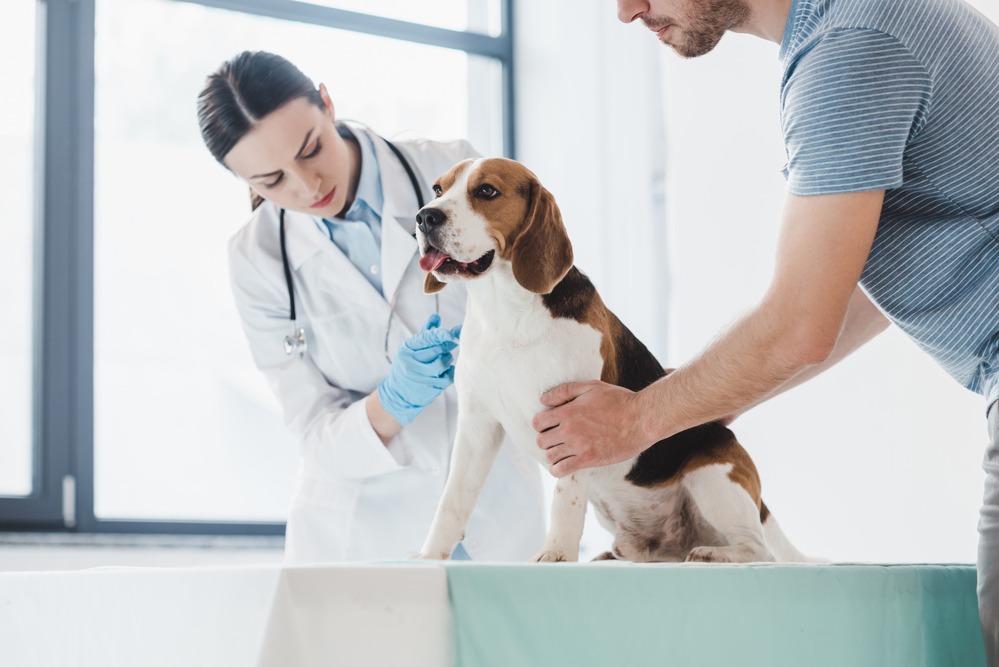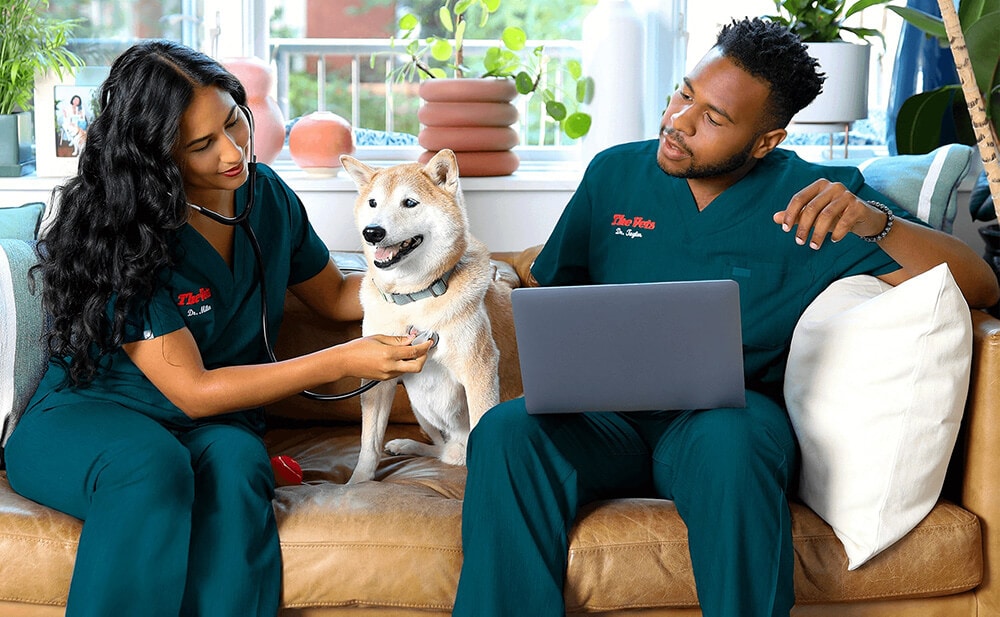Why Pet Rehab Is Essential: the Benefits of Vet Providers for Your Pet dog's Recovery
Animal rehab is a vital component of recuperation for family pets facing injuries or specials needs. Veterinary services offer vital assistance via customized recovery strategies that attend to private requirements. These plans often consist of discomfort administration, physical therapy, and dietary support. Understanding the numerous facets of pet rehabilitation can brighten its value in enhancing healing outcomes. What specific advantages do these services provide, and exactly how can they change a pet's recovery trip?
Comprehending Pet Recovery
Pet recovery encompasses a variety of healing practices focused on restoring the health and wellness and performance of damaged or disabled animals. This area integrates different methods, consisting of physical therapy, hydrotherapy, and work-related treatment, customized to satisfy the specific demands of each animal. Rehabilitation specialists assess an animal's problem, establishing individualized treatment plans that may involve exercises to strengthen muscular tissues, improve flexibility, and enhance general wellness. The process not just focuses on physical recuperation yet additionally addresses psychological and behavior aspects. Animals typically experience tension and anxiety following an injury, making psychological health and wellness factors to consider important in rehab. By creating a supportive environment, specialists can help animals regain their confidence and adapt to their new conditions. Through regular sessions, animals can experience considerable renovations, ultimately resulting in a much better lifestyle. Overall, understanding pet rehabilitation highlights its significance in advertising recovery and enhancing the bond between animals and their owners.
The Function of Pain Administration in Recovery
Just how crucial works pain administration in the healing of injured pets? It plays an essential duty in helping with recovery and improving the general well-being of family pets. Correct discomfort management not only eases discomfort yet also promotes flexibility, allowing animals to participate in recovery activities needed for recuperation. When pain is successfully taken care of, animals have a tendency to respond favorably to treatment, bring about quicker recovery outcomes.Veterinarians utilize different techniques to examine and resolve pain, including medications, acupuncture, and alternative treatments. By customizing pain management strategies to the specific demands of each animal, vets can ensure that pet dogs remain calm and participating throughout their healing journey. Furthermore, reducing discomfort assists reduce stress and anxiety, which can hinder healing and lengthen healing times. To sum up, reliable discomfort management is vital for boosting the recuperation process and improving the lifestyle for injured animals.
Physical Treatment Techniques for Pet Dogs
Various physical treatment methods are readily available to aid in the recovery of animals recuperating from injuries or surgeries (tplo surgery). These techniques can enhance movement, eliminate pain, and promote recovery. Restorative exercises, for circumstances, help enhance muscles and boost joint feature, enabling family pets to reclaim their physical capacities gradually. Manual therapy, which consists of massage therapy and mobilization, can alleviate stress and enhance flow, adding to a quicker recovery.Other strategies such as easy variety of activity workouts urge joint adaptability and reduce rigidity. In addition, electrical stimulation treatment might be utilized to stimulate nerves and muscular tissues, advertising healing and discomfort relief.Veterinary professionals usually customize these strategies per pet's specific demands, guaranteeing a complete recovery plan. By implementing these physical treatment approaches, pet dogs can experience improved lifestyle and a much more effective healing from their disorders. The assimilation of these methods into rehabilitation programs is vital for ideal recuperation results
Benefits of Hydrotherapy for Recovery
Hydrotherapy uses significant advantages in pet recovery, especially in enhancing movement. This water-based therapy advertises discomfort relief while providing comfort to harmed or recouping animals. Furthermore, it facilitates strength-building workouts that add to overall physical healing.
Improved Wheelchair Improvement
As pets recover from injuries or surgical procedures, enhanced wheelchair commonly becomes a key goal of their rehab. Hydrotherapy works as a valuable device in achieving this goal. Through water-based exercises, pets can participate in low-impact motions that facilitate joint flexibility and strengthen muscle mass without the stress of weight-bearing activities. The buoyancy of water sustains their bodies, allowing for boosted variety of activity and flexibility renovation. In addition, hydrotherapy urges far better equilibrium and control, which are essential for restoring normal activity patterns. Normal sessions can lead to substantial progress in an animal's physical capacities, inevitably improving their lifestyle. This approach not just aids in recovery however likewise promotes an extra energetic and fulfilling way of living post-rehabilitation.
Discomfort Relief and Convenience

Alleviation from pain is an essential facet of pet rehab, and hydrotherapy significantly contributes to this process. By using water's buoyancy, hydrotherapy lowers joint tension and eases discomfort during motion. This healing technique provides a calming environment where pets can engage in gentle workouts without the complete weight of their bodies affecting their healing. The cozy water promotes blood flow, promoting recovery while likewise motivating relaxation. Furthermore, hydrotherapy sessions can be customized to satisfy the specific requirements of the pet, making certain optimal convenience. As animals experience minimized discomfort and increased comfort degrees, their total determination to take part in recovery activities typically improves, resulting in a much more reliable recuperation trip. Subsequently, hydrotherapy offers as a crucial device in enhancing pain relief and convenience during rehab.
Strength Structure Exercises
Strength-building workouts play an essential duty in the recovery process, with hydrotherapy offering unique advantages. This kind of therapy uses water resistance to improve muscle toughness without putting too much strain on the joints. The buoyancy of water supports the animal's weight, enabling much safer activity and enhanced series of motion. Furthermore, hydrotherapy can boost cardio wellness and promote overall health and fitness, assisting in much faster recuperation from injuries or surgical procedures. The controlled setting also decreases the risk of reinjury, making it an ideal choice for pet dogs calling for recovery. Routine hydrotherapy sessions can bring about noticeable improvements in wheelchair, stamina, and endurance, eventually improving the pet's lifestyle and capability to return to normal activities.
Relevance of Customized Rehab Plans
Custom-made rehab plans are essential for addressing the one-of-a-kind requirements of each animal, ensuring personalized therapy approaches. These plans permit for effective progress monitoring and essential modifications, fostering perfect healing results. Additionally, an all natural technique can enhance the overall health of the animal, advertising an extra detailed rehabilitation experience.
Individualized Treatment Approaches
While several rehabilitation programs adopt a one-size-fits-all strategy, the one-of-a-kind requirements of each animal necessitate personalized treatment strategies for excellent healing. Personalized rehab plans take into consideration different aspects, consisting of the animal's species, age, case history, and certain injuries or problems. By customizing treatments, vets can address each family pet's one-of-a-kind challenges, taking full advantage of the performance of the recovery process. Embellished strategies might incorporate different modalities such as physical therapy, hydrotherapy, and therapeutic exercises, ensuring that the treatment lines up with the animal's abilities and development. Additionally, individualized techniques promote a more powerful bond in between the pet and the caregiver, advertising a more interesting and encouraging healing atmosphere. Ultimately, customized treatment is crucial for accomplishing ideal possible outcomes in animal rehab.
Development Tracking and Adjustments

Holistic Recuperation Techniques
Holistic recuperation approaches are vital for effective animal rehab, as they highlight the importance of personalized therapy plans customized to every pet's specific demands. This strategy considers the physical, psychological, and ecological elements influencing healing. Customized rehab strategies might consist of a combination of physical treatment, nutritional counseling, and behavior alterations. By resolving these varied facets, vets can improve the overall health of the animal and promote a faster healing. Furthermore, such tailored methods promote a much deeper understanding of the animal's special obstacles, bring about more effective interventions. Eventually, holistic healing methods not only boost physical wellness however also contribute to the pet's mental and psychological stability, making sure a thorough rehabilitation experience.
The Effect of Nutrition on Recuperation
Nutrition plays a vital function in the healing process for refurbishing animals, typically determining the rate and effectiveness of healing. A healthy diet regimen gives the necessary nutrients that sustain tissue repair service, enhance the immune system, and improve general vitality. Protein is especially crucial, as it aids in muscle mass rebuilding and recuperation from injuries. Necessary fats, vitamins, and minerals likewise add to decreasing swelling and promoting ideal mobile function.Veterinarians frequently stress the significance of tailored nutrition strategies, considering each animal's specific demands, age, and health and wellness status. Correct hydration is just as important, as fluids facilitate nutrition absorption and help in detoxing. By making certain that family pets receive proper nourishment, caregivers can significantly enhance their opportunities of an effective healing, resulting in better long-term health end results. Eventually, nutrition serves as a fundamental aspect in the recovery trip, sustaining pets in restoring stamina and resilience post-injury or health problem.
Success Stories: Pet Dogs That Thrived After Recovery
Successful rehabilitation tales are plentiful, showcasing the resilience of pet dogs who have overcome considerable challenges. Take, for circumstances, Bella, a golden retriever that suffered severe injuries from a vehicle mishap. With dedicated veterinary treatment and a complete rehabilitation program, she regained her movement and returned to her playful self, much to her proprietor's joy. Similarly, Max, a senior feline detected with joint inflammation, experienced remarkable improvement via a combination of physical treatment and discomfort administration. His newly found agility allowed him to appreciate his preferred sunbathing areas once again. Another motivating situation is that of Coco, a rescued greyhound who got over anxiety via behavior adjustment and socialization techniques, allowing her to thrive in her new home. These visit the website success tales exhibit the transformative power of pet rehab, emphasizing that with the ideal support, animals can not only recuperate however lead meeting lives, enhancing the bonds they share with their family members.
Frequently Asked Inquiries
The length of time Does the Rehabilitation Refine Commonly Take for Pet Dogs?
The rehabilitation procedure for pets generally varies based upon the injury or problem, varying from a few weeks to a number of months. Private progression, therapy kind, and dedication to workouts substantially influence the general duration of recovery.
Are There Any Threats Connected With Animal Rehabilitation?
Animal rehabilitation might bring threats such as worsening of injuries, incorrect strategies causing discomfort, or not enough tracking during healing. These variables can prevent progress and impact the overall performance of the rehab procedure.

Can All Pets Advantage From Rehabilitation Solutions?
Not all family pets might require rehabilitation, yet several can profit significantly. Rehab services can boost flexibility, relieve pain, and enhance general health, especially for those recouping from injuries, surgical treatments, or chronic problems.
How Can I Prepare My Pet for Rehab Procedure?

What Signs Show My Animal Demands Recovery?
Indicators showing a family pet might need rehabilitation include difficulty walking, limping, decreased task levels, unwillingness to jump, or signs of discomfort. Observing these habits can motivate owners to look for specialist analysis and therapy for their pet dogs.